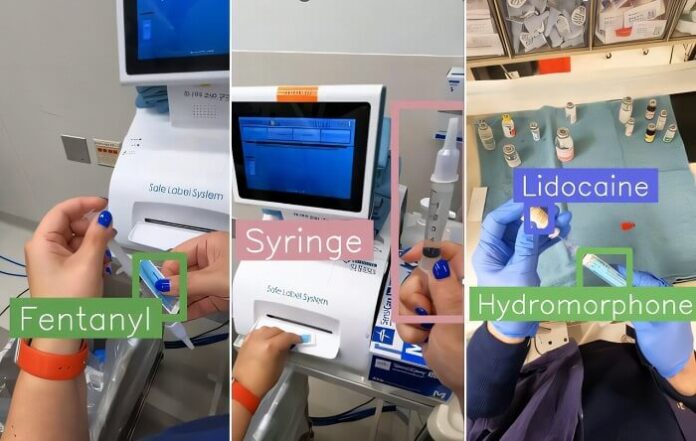

A team of researchers has developed the first wearable camera system that uses artificial intelligence to detect potential medication delivery errors. The system demonstrated high accuracy in recognizing and identifying medications in busy clinical environments, with the AI detecting vial-swap errors at 99.6% sensitivity and 98.8% specificity.
Co-lead author Dr. Kelly Michaelsen, assistant professor of anesthesiology and pain medicine at the University of Washington School of Medicine, emphasized the system’s potential to prevent medication errors in real time, particularly in operating rooms, ICUs, and emergency settings. “The ability to prevent errors before they happen is powerful,” Michaelsen said. While aiming for 100% accuracy is ideal, she noted that even human performance cannot reach that level. In a survey of over 100 anesthesia providers, most desired a system that was at least 95% accurate—a goal the team achieved.
Medication errors are a significant issue in anesthesia and intensive care, with an estimated 5% to 10% of all administered drugs associated with mistakes. Injectable medication errors impact around 1.2 million patients annually, costing $5.1 billion.
Syringe and vial-swap mistakes are common during intravenous injections, with about 20% due to selecting the wrong vial or mislabeling the syringe, and another 20% occurring when the drug is labeled correctly but administered incorrectly. While safety measures like barcode systems exist, they can be bypassed in high-pressure situations.
As reported by medicalxpress, the research team set out to develop a deep-learning model paired with a GoPro camera that could identify vials and syringes and provide a warning before medication is administered. The model was trained using 4K video footage of 418 drug draws performed by 13 anesthesiology providers in various operating room setups. This data allowed the AI to recognize medication containers even when obstructed or handled quickly.
Shyam Gollakota, co-author and professor at the UW’s Paul G. Allen School of Computer Science & Engineering, explained that the model was trained to focus on relevant medications in the foreground while ignoring other objects. The AI accurately tracked the syringe being handled by the clinician, rather than those in the background.
This breakthrough demonstrates the potential for AI and deep learning to enhance safety and efficiency in healthcare. The study involved researchers from Carnegie Mellon University, Makerere University in Uganda, and the Toyota Research Institute, which helped develop and test the system.























